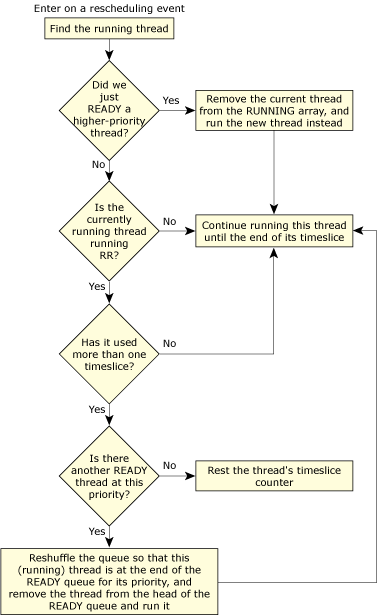


#Kernel retrieve timeslice used full#
To display the class and priority of the running process, enter:ĭump full web server disk / mysql or pgsql database backup using best effort scheduling (2) and 7 priority: Linux refers the scheduling class using following number system and priorities: Scheduling classĨ priority levels are defined denoting how big a time slice a given process will receive on each scheduling windowĠ-7, with lower number being higher priority Ionice -c1 -n0 PID How do I use the ionice command on Linux? This is should be avoided for all heavily loaded system. As with the best effort class, 8 priority levels are defined denoting how big a time slice a given process will receive on each scheduling window. Thus the RT class needs to be used with some care, as it can starve other processes. Real time : The RT scheduling class is given first access to the disk, regardless of what else is going on in the system.This is usually recommended for most application. Programs running at the same best effort priority are served in a round-robin fashion. This class takes a priority argument from 0-7, with lower number being higher priority. Programs inherit the CPU nice setting for io priorities. Best effort : This is the default scheduling class for any process that hasn’t asked for a specific io priority.


This scheduling class does not take a priority argument. The impact of idle io processes on normal system activity should be zero. Idle : A program running with idle io priority will only get disk time when no other program has asked for disk io for a defined grace period.It supports following three scheduling classes (quoting from the man page): The ionice command provide better control as compare to nice command for the I/O scheduling class and priority of a program or script. Sample /bin/nice -n19 /path/to/backup.sh Say hello to ionice utility You can run a program with modified scheduling priority using nice command (19 = least favorable): sys/block/sdc/queue/scheduler => noop anticipatory deadline ĬFQ is default and recommended for good performance. sys/block/sdb/queue/scheduler => noop anticipatory deadline Sample output for each disk: /sys/block/sda/queue/scheduler => noop anticipatory deadline # for d in /sys/block/sd/queue/scheduler do echo "$d => $(cat $d)" done RHEL 4/ 5 and SuSE Linux has all scheduler built into kernel so no need to rebuild your kernel. CFQ (Completely Fair Queuing) is an I/O scheduler for the Linux kernel, which is default in 2.6.18+ kernel. You need Linux kernels 2.6.13+ with the CFQ IO scheduler.


 0 kommentar(er)
0 kommentar(er)
